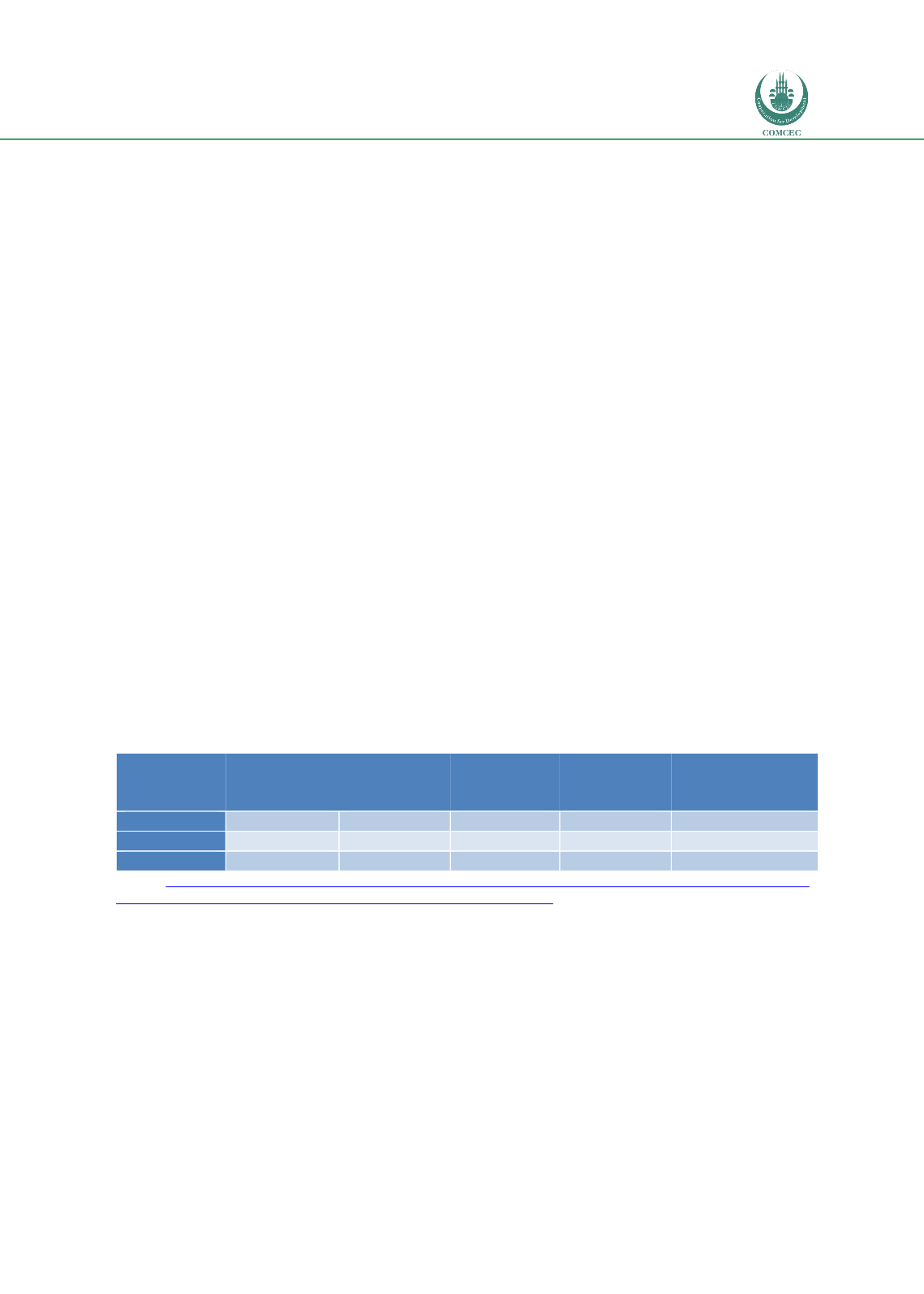

Reducing Postharvest Losses
In the OIC Member Countries
47
According to FAO estimates, global quantitative food losses and waste per year are roughly
20% for dairy (FAO, 2013b). In the case of Turkey, the bulk of the milk losses occur at the
production level (10%), followed by postharvest handling and storage (1%), processing and
packaging (1.5%), distribution (6%), and consumption at household level (1.5%) (FAO, ibid).
Studies by FAO show that economic losses in the dairy sector in East Africa and the Near East
due to spoilage and waste could average as much as US$90 million per annum.
As for individual countries, data collected during an FAO project reveal that annual losses of
milk in Kenya, Uganda and Tanzania alone amount to about US$56 million. The data showed
that in Uganda about 27% of all milk produced is lost, namely that 6% is wasted at the farm
level, whilst 11% and 10% of production is either lost due to spillage or spoilage during
transport or marketing, respectively (FAO and AfDB, 2009). FAO calculated the value of these
losses in the Ugandan dairy sector at US$ 23 million per annum. It is also indicated that
Ugandan milk production is 900 million litres per annum, of which 585 million litres are
marketed and 123 million litres are lost (21% of marketed milk).
As for Kenya, the same FAO source indicates that 2,550 million litres of milk are produced per
annum, of which 1,350 million litres are marketed, and about 95 million litres are lost,
representing 7% of the marketed milk or US$ 22.4 million. In an earlier study, it was estimated
that losses amounted to about 67 million litres of milk annually due to waste and spoilage,
which was equivalent to about US$ 18 million (Smallholder Dairy Project Policy Brief 8, 2005;
www.smallholderdairy.org). For example, according to a study by this project milk losses due
to spoilage accounted for 26% of the variable cost of cooling in the small-scale centre
compared to zero in the larger centres.
Regarding Tanzania, FAO studies show that cumulative losses in the dairy sector amount to
approximately 59.5 million litres of milk each year, for annual losses of around US$ 14.3
million. The aforementioned website indicates that milk production in Tanzania is 1000
million litres, of which 271 million litres are marketed and 59.5 million litres of the marketed
quantity are lost (worth US$11 million) (Table 13)
Table 13: Milk produced, marketed and lost in East Africa
Country
Production
(million
litres)
Marketed
(million
litres)
Loss
(million
litres)
Milk
marketed
(%)
Value of loss
(USD million)
Kenya
2,550
1,350
95
7
22.4
Tanzania
1,000
271
59.5
21.9
11
Uganda
900
585
123
21
23
Source:
http://www.fao.org/ag/ags/postharvest-management/milk-dairy/milk-and-dairy-products-postharvest- losses-and-food-safety-in-sub-saharan-africa-and-the-near-east-pfl/en/(accessed, 21-04-2016).
ILRI (2005), indicate the following total percentage values of postharvest milk losses
compared to the total milk produced in Ethiopia (1.5%), Kenya (3%), and Tanzania (5.6%),
representing the quantified losses in value through spillage, spoilage and forced consumption
of liquid milk. Results for Uganda were incomplete because information was lacking on the
quantities of milk available at the major levels of the milk chain. Data from Syria was
unavailable.
It is estimated (FAO, 2003b) that in Syria overall postharvest milk losses in the small-scale
dairy sector lie in the range of 10% to 15% in summer, and 2% to 5% in other seasons,
whereas the losses of the public sector do not exceed 1% in summer.
















